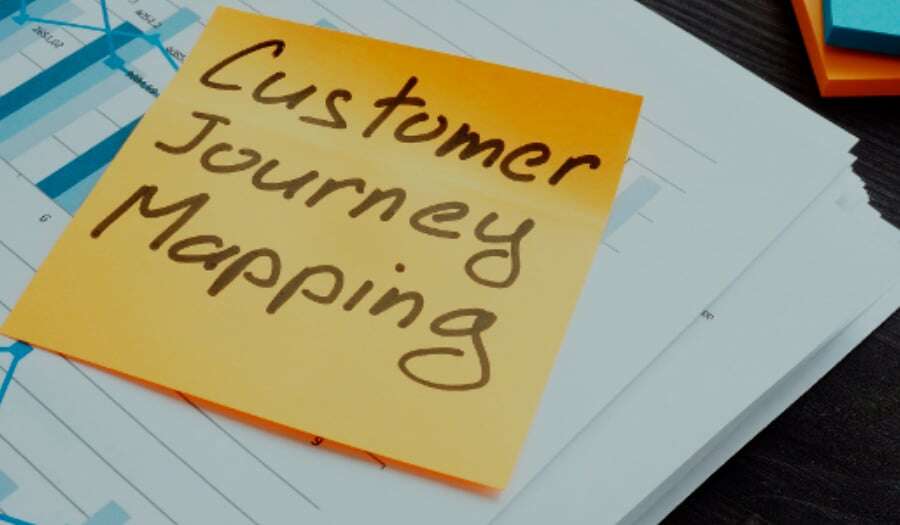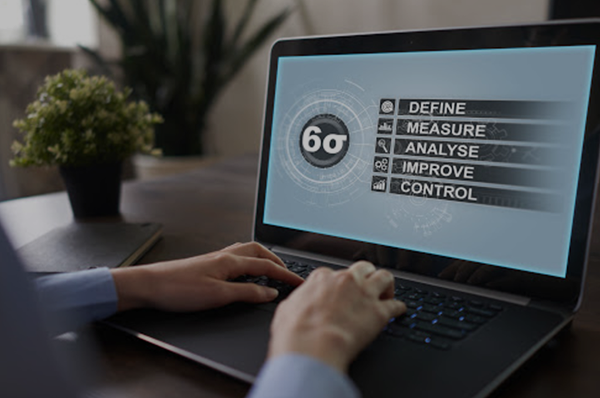Customer Journey: Build the best customer experience
In today's highly competitive market, people have a wide variety of brands or entities to turn to when they need a product or service. For a company...
By Role
By Industry
By Target Customer
What We Offer
We drive business growth by improving operational efficiency through process optimization, smart automation, and cost control. Our approach boosts productivity, reduces expenses, and increases profitability with scalable, sustainable solutions
Customer Experience
We design memorable, customer-centered experiences that drive loyalty, enhance support, and optimize every stage of the journey. From maturity frameworks and experience maps to loyalty programs, service design, and feedback analysis, we help brands deeply connect with users and grow sustainably.
Marketing & Sales
We drive marketing and sales strategies that combine technology, creativity, and analytics to accelerate growth. From value proposition design and AI-driven automation to inbound, ABM, and sales enablement strategies, we help businesses attract, convert, and retain customers effectively and profitably.
Pricing & Revenue
We optimize pricing and revenue through data-driven strategies and integrated planning. From profitability modeling and margin analysis to demand management and sales forecasting, we help maximize financial performance and business competitiveness.
Digital Transformation
We accelerate digital transformation by aligning strategy, processes and technology. From operating model definition and intelligent automation to CRM implementation, artificial intelligence and digital channels, we help organizations adapt, scale and lead in changing and competitive environments.
Operational Efficiency
We enhance operational efficiency through process optimization, intelligent automation, and cost control. From cost reduction strategies and process redesign to RPA and value analysis, we help businesses boost productivity, agility, and sustainable profitability.
Customer Experience
Marketing & Sales
Pricing & Revenue
Digital Transformation
Operational Efficiency
4 min read
Por Susana Matamoros | May 29, 2025
4 min read
Por Susana Matamoros | May 29, 2025
Have you ever thought that the process of your purchase or of any person implies a previous process until you make or carry out the transaction?
Every interaction a customer has with a brand shapes their perception and influences their decisions. A Customer Journey Map serves as a powerful tool to visualize these interactions, helping businesses understand and optimize the experience at every touchpoint. By mapping out the customer’s journey, companies can identify pain points, uncover opportunities, and create seamless experiences that drive engagement and loyalty.
A well-structured Customer Journey Map not only highlights key moments in the buying process but also provides valuable insights into customer expectations, emotions, and motivations. It allows businesses to step into their customers’ shoes, fostering a more empathetic approach to designing products, services, and communication strategies.
This article explores what a Customer Journey Map is, why it is essential for any business, and how to create one effectively. By following a clear methodology, organizations can develop a journey map that enhances customer satisfaction, strengthens brand loyalty, and ultimately improves business outcomes.
Index:
This Design Thinking tool allows you to visually capture a map of each of the stages, interactions, channels and elements that a customer goes through throughout the Buying Cycle. The Customer Journey Map uses narratives and visuals to illustrate the relationship a customer has with a business over a period. The story is told from the customer's perspective, providing insight into the total customer experience.
This way you can better understand and address customer needs and pain points as they experience your product or service. Having built an understanding of the customer journey with your business, you will be able to improve the customer experience and will allow you, among other things: to get a panoramic view of the entire customer journey, create faster and higher conversion rates while minimizing the negative customer experiences, prioritize actions in the customer service strategy, retain more customers by understanding how they transit, among others.
Customer Journey Maps can take a wide variety of forms. However, the end goal is always the same: find and solve your clients' pain points.
Knowing your customer is the basis of any strategy. If you want to know more about creating a Buyer Persona you can enter here.
A deep understanding of who your customers are, what they need, and how they interact with your business will allow you to describe each person's experience at various points of contact during their life cycle with your business.
Both the Customer Journey Map and the Buyer Persona construction can complement each other, for example, the definition of the Customer Journey can help us to better understand our Buyer Personas and get more out of them. How? One of the central elements of the Buyer Persona are the pain points, which can be: frustrations, inefficiencies, needs, problems, motivations, missed opportunities and excessive costs, all these elements will help to update and improve your Buyer Persona.
Customer Stages are a way to organize Customer Journey Maps. Each stage shows an important goal that your Buyer Persona is trying to achieve. So, once you've defined your persona, you need to identify the stages of the customer journey. What is the process that is needed to start from the consideration to the purchase of your product or service? According to your Buyer Persona built, define the stages you experience with your company and your team over time. Define how, when and where: they discover your company, research your products or services, choose you over their competitors, buy from you and maintain a relationship with you.
Customer touch points are all those moments in which the customer gets in touch with your brand, for example, where did they find your business? Online or in an ad, did they see ratings and reviews? Did they visit your website? Did they shop at your retail store or contact customer service? Properly building this interaction is an important step in creating an effective Customer Journey Map and making sure your customers are satisfied every step of the way.
Gather people who have characteristics of your Buyer Persona and carry out an investigation. You may need to offer some incentives for participation; however, most people will be happy to help if they are genuinely interested in the experience and will use your feedback to make things better for others. Conduct your study by asking the following questions for each stage of the identified journey:
Once you have identified the touch points, it is time to study the big picture. Take a general look at your map and try to identify any sticking points within the customer experience. It is important to note that each business is different, and this is where you and your team will show how much you know about customers to determine where they could show discontent or friction in the process. There are some sample questions below to get you started:
Don't build your map just to have it for decoration. The Customer Journey Map should allow you to identify some quick fixes, including opportunities to increase enjoyment and enhance the journey. In this process, many companies find that the process helps them drive broader improvements in the customer experience as their needs are better understood and met. Therefore, treat your Customer Journey Map as a living document and review it periodically with your team, update it as needed, and remember to share it with all stakeholders within your organization.
The Customer Journey Map as a tool within the business process must have comprehensive solutions that structure, plan and improve the experience of service, attention and communication with the customer. Something that the organization itself also benefits from having more information about user behavior, and thanks to this make better decisions and deepen in a better adaptation of the service with respect to customer needs.
Each organization seeks to offer the best relational experience to customers and citizens thanks to technology. Build your own Customer Journey Map and attract more customers by adding value to their shopping experience. Here is a template for you to develop.
A Customer Journey Map is more than just a diagram—it is a strategic tool that helps businesses align their efforts with customer needs and expectations. By mapping the journey, companies gain a deeper understanding of the customer experience, allowing them to refine interactions, eliminate friction, and enhance overall satisfaction.
Creating an effective Customer Journey Map requires continuous analysis and adaptation. Customer behaviors, preferences, and expectations evolve over time, making it essential for businesses to update their journey maps regularly. This proactive approach ensures that companies stay responsive to their customers and maintain a competitive edge.
By embracing Customer Journey Mapping, businesses can create meaningful, customer-centric experiences that foster loyalty and long-term success. Investing in this practice not only improves conversions and retention but also strengthens the overall brand perception, making each interaction more valuable and memorable.

In today's highly competitive market, people have a wide variety of brands or entities to turn to when they need a product or service. For a company...

Are you interested in the word delight once you hear it? In the field of customer experience, this word is used to refer to creating a positive...

Have you ever heard of the concept of continuous improvement? We are talking about a work philosophy focused on a constant questioning of what could...